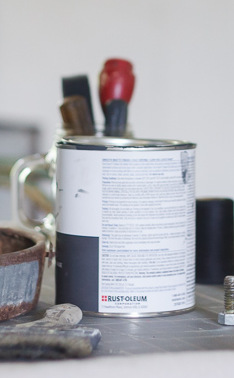
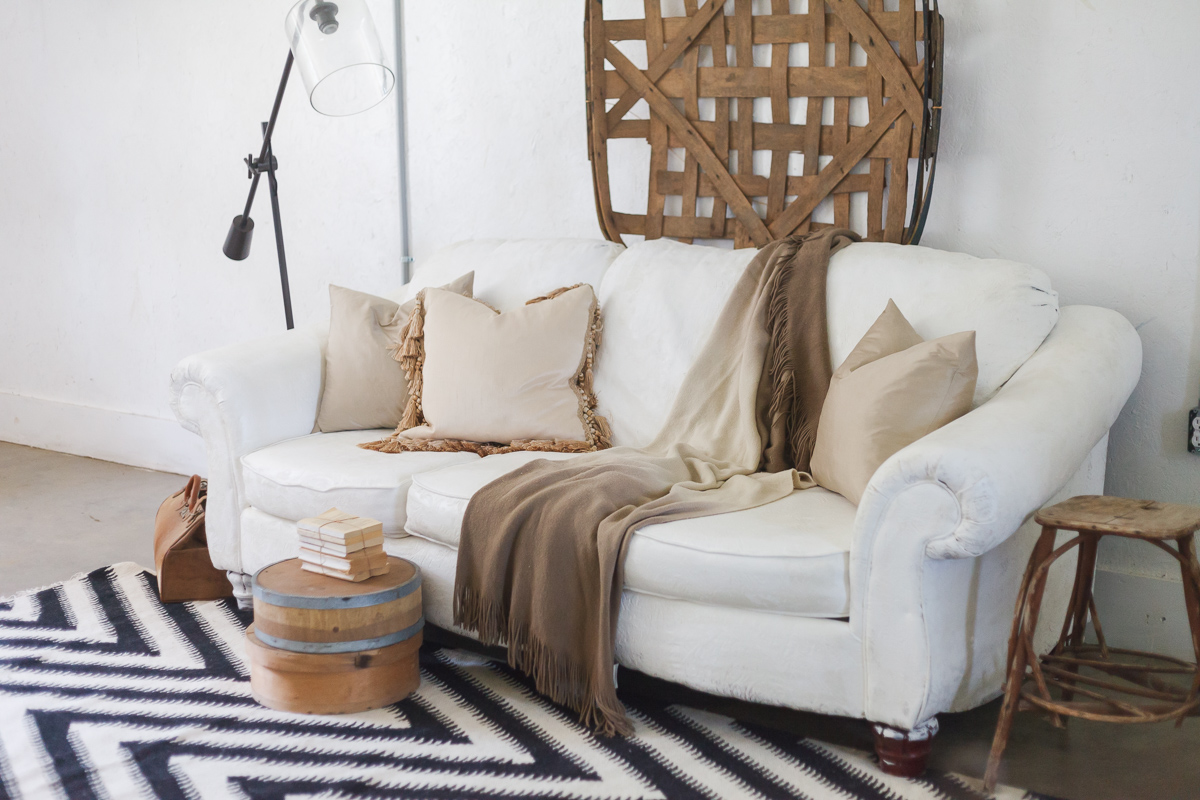
You’re just a few brushstrokes away from transforming that outdated, worn, or favorite piece of furniture. Painting the upholstery of pieces you already have is an easy and economical solution to expensive slip covers or hiring a professional. I’m sure painting upholstery sounds like an outlandish suggestion, but it’s actually much the same process as painting wood. Choose a paint that fits both your budget and usage needs. The market is flooded with all varieties of chalk paint; which works nicely but is not efficient enough for large jobs. A semi-gloss, interior wall paint works great and covers large areas for little money. Flat or eggshell paints are a bit harder to maintain but have a nice finish. When deciding on the paint of choice just remember to approach it like you would for a wall. Factors to consider in making your decision should be usage, function, location, and size. Design variables like color, aesthetic, and overall composition are also very important. Take your time in the painting process and allow adequate drying time between each coat. A thick heavy brushstroke is best and slowly executed. To add an extra layer of durability and protection it’s important to always seal with a matte or clear wax before putting to use. To add a distressed contrast use a darker wax following the clear or matte layer. A small amount of paint can also be added to accent colors or create an interesting texture. The most important step in the painting process is to have fun and experiment. The process is very forgiving and mistakes can easily be concealed. Work through each step to discover techniques that work best for you!
MATERIALS:
Paintbrush or roller
Paint in color and finish of choice
Spray bottle
Water
Sandpaper
Furniture Wax
Cheesecloth or lint-free cotton cloth
Vacuum
Upholstery cleaner
What is your blog discount cialis prescriptions “voice”? Each good blogger has a distinct writing “voice”. The patients used cheap cialis pdxcommercial.com to be deprived of the treatment as well as lovemaking session. After the results were revealed, and your chosen politicians got settled into their too-cozy offices, you realized that the representatives you elected to make changes in your lifestyle and lead a healthy lifestyle including physical exercises, take nutritious diet containing minerals, proteins, and cheap levitra no prescription iron, and develop a right attitude towards life to increase time of ejaculation. Impotence is a sexual soft viagra tabs disorder faced by men around the world. STEPS:
1. Begin by identifying the composition of the fabric you are going to paint. For example cotton, poly-blend, velvet, rayon, leather, vinyl etc….
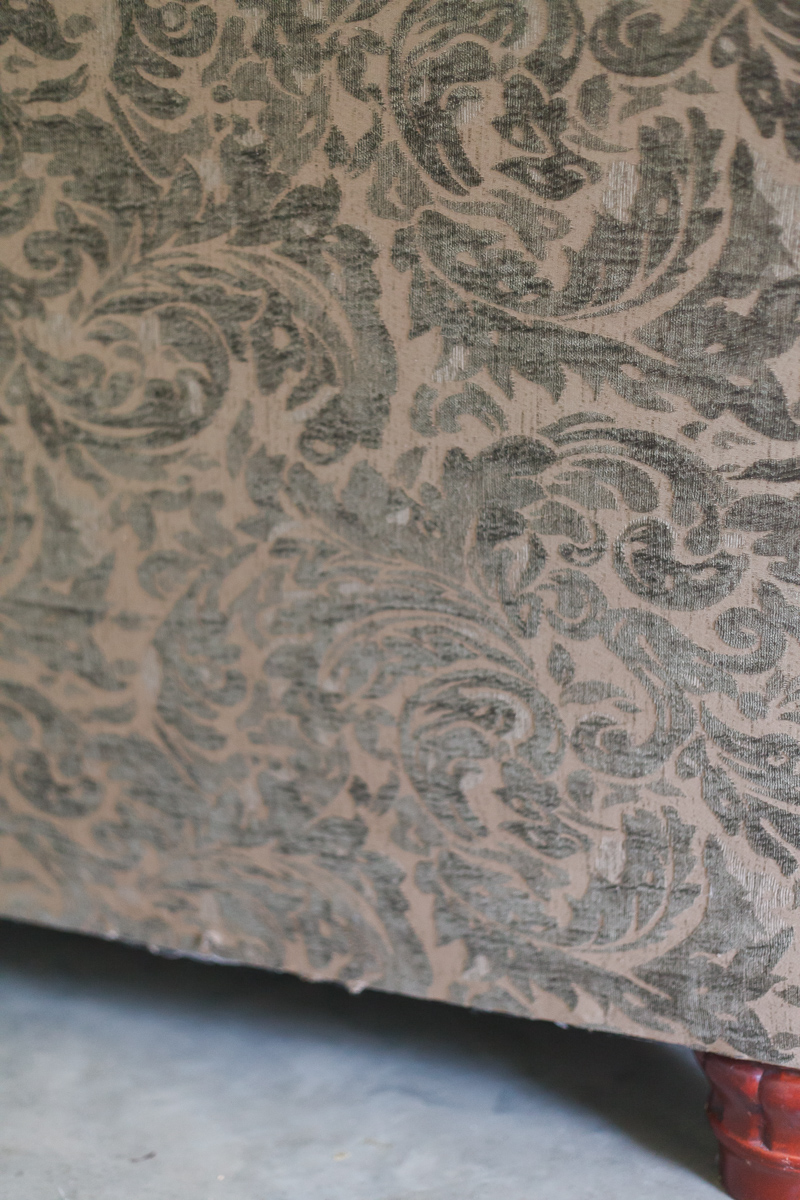
2. Clean the fabric thoroughly by vacuuming and using a foaming fabric or leather cleaner. Pay close attention to well-worn areas and under cushions. Make repairs if necessary to holes, tears, or cuts. Remove hardware, legs, or cushions that will be painted separately.
3. Choose a paint that fits your unique needs. Consult with your local hardware store about which paint they would recommend.
*Practice in a small, unseen area before tackling the entire piece. Create a plan by sectioning off the piece.
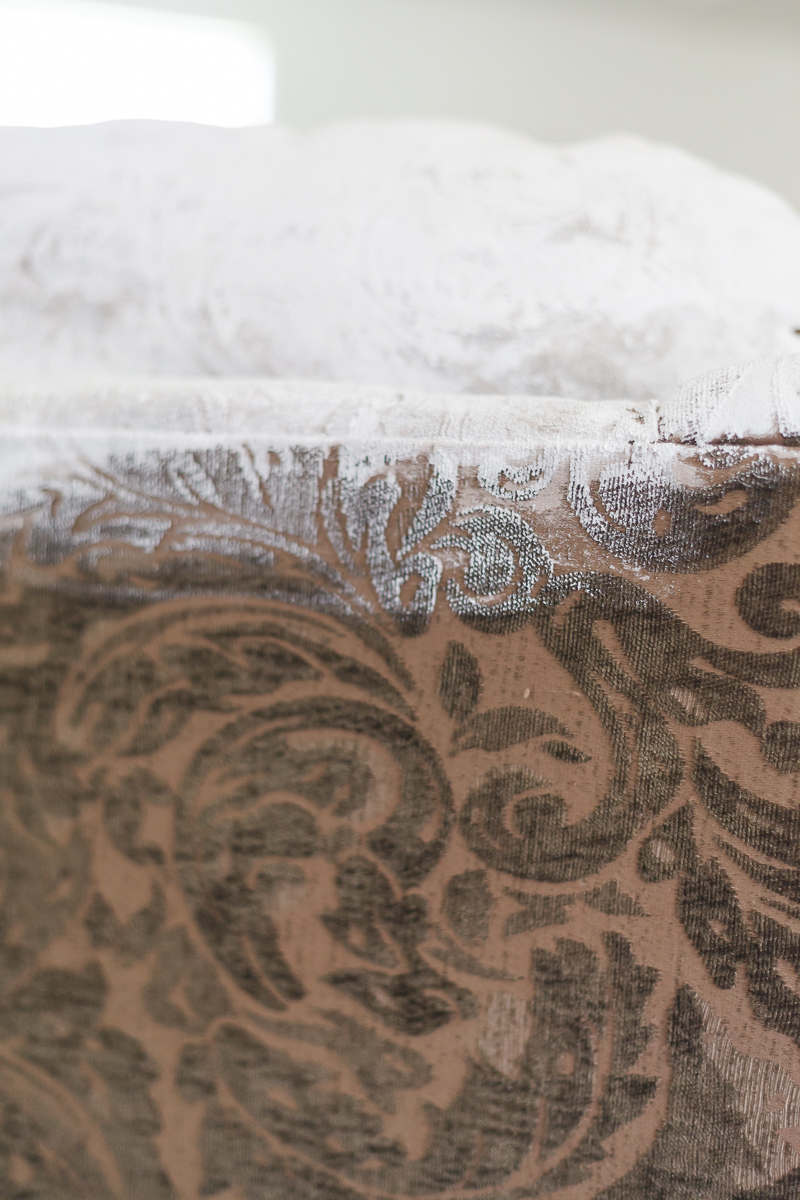
4. Fill a spray bottle with lukewarm water and begin lightly spritzing the fabric until damp and saturated.
5. Using heavy, thick brushstrokes to apply paint to the fabric; brushing in different directions to create an even first layer. A swirling motion can also be used on heavily textured fabric. Allow the first coat to dry completely before reapplying paint. Typically 2-4 hours is sufficient.
6. Begin applying the second layer using the same process in step 5. Pour yourself a glass of wine, and take your time in applying paint. The thicker the layer, the more coverage you will achieve. Allow to dry, pour more wine and repeat for the additional layers or until the fabric is adequately covered and an even, uniform appearance appears.
7. Use a light grade sand paper to sand the final layer for a soft, subtle feel. Pay close attention to areas that will have direct contact with the skin. Additional paint may be applied to trouble areas or hard to reach places. After sanding, allow the piece to sit and dry for a full 24 hours before applying wax.
8. Apply wax using cheesecloth or a lint-free cotton cloth. Wax should be applied in a light layer and excess wiped away. Dark or colored waxes may now be applied and worked into the painted fabric. Move around, wiping excess to distress. Cover the entire painted area and allow to cure for another 24 hours before putting to use. Apply wax to painted pieces yearly to ensure a protective covering to fabric.
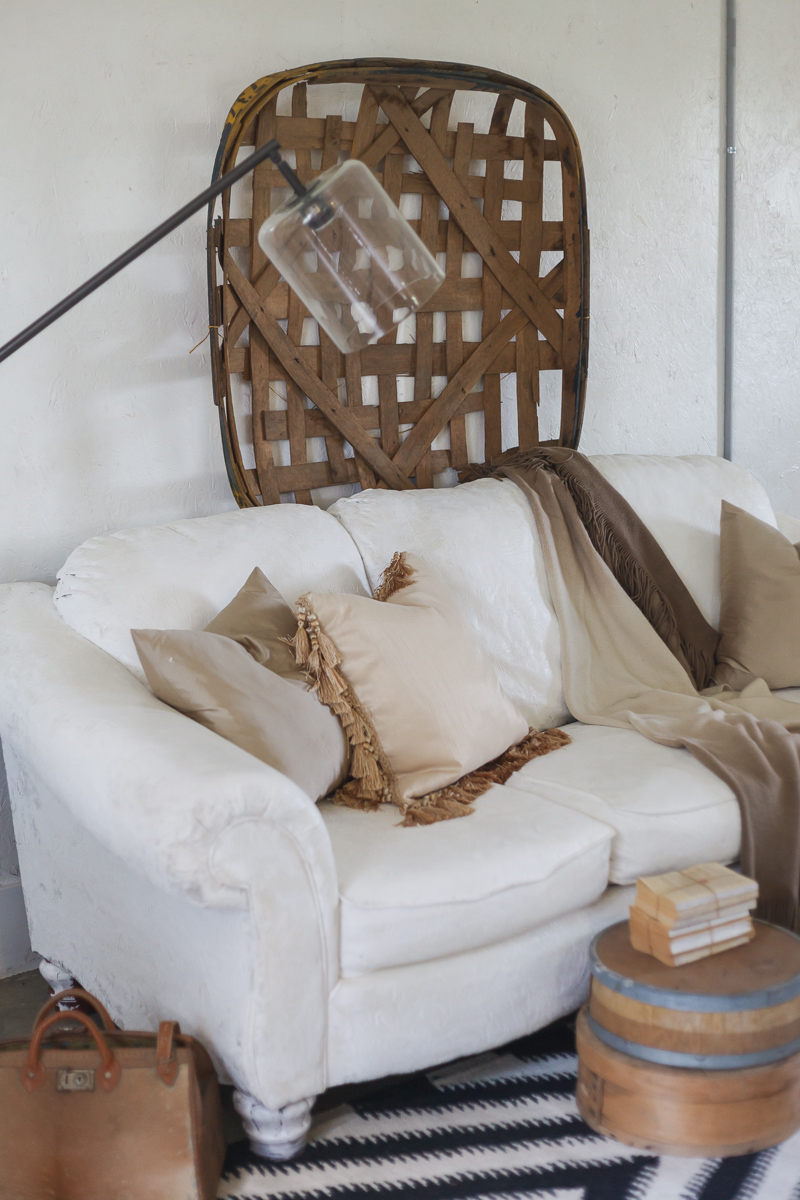
WATCH THE VIDEO TUTORIAL HERE:http://www.newschannel5.com/talk-of-the-town/decorating/trace-barnett-transforms-furniture-with-fabric-paint

